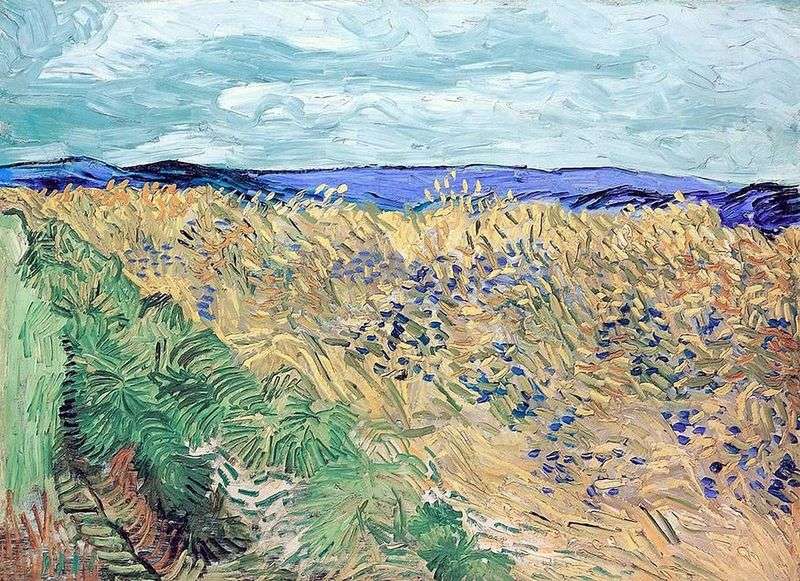
Wheat fields around Overa attracted the attention of Van Gogh, and their images fell on the canvases one by one. The emptiness of the boundless spaces seemed to reflect the inner state of the artist’s exhausted illness. In the windswept ears, surrounded by hills and sparse vegetation, Vincent found the peace and quiet that he needed so much during this period.
In this landscape, he depicts the edge of a wheat field, stretching out into the distance. Van Gogh divides the picture into several clearly defined color bands that converge at one point on the horizon. Despite their contrast, the color of the picture remains soft, almost pastel.
The sky is covered with gray clouds, and in the background a bright blue hill rises, surrounded by a dark outline. This color brightly speckled with cornflowers is repeated among the ears, in the image of which Vincent used the softer combinations of yellow and yellow-blue mixture. The roadside of the field is overgrown with bunches of green grass, through which the earth is looking through.
Van Gogh does not write out the details, but achieves expressiveness due to the different directions of smears. Wheat sway under the light winds, and gray clouds in the sky foretell the rain. Nevertheless, the picture looks very bright and peaceful, and in combination of colorful stripes an optimistic positive start is seen.
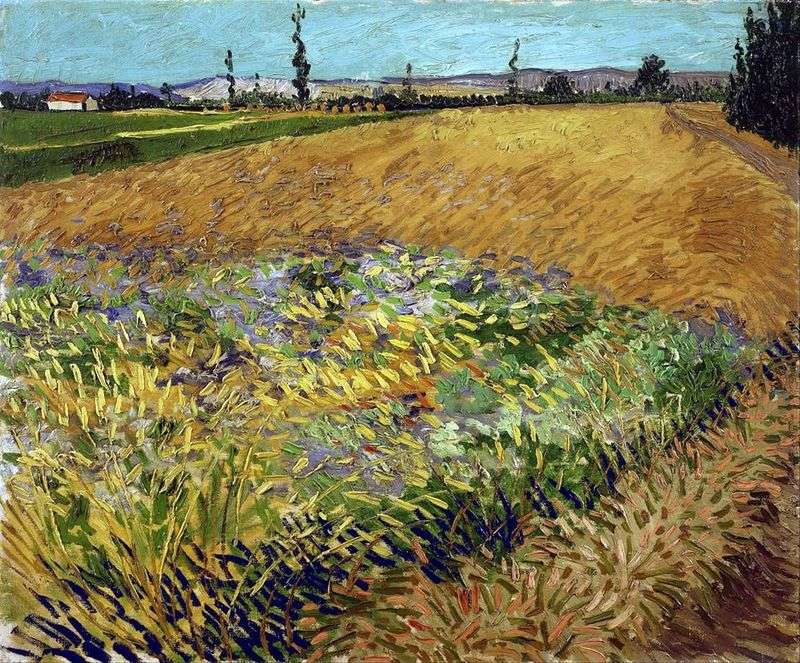 Wheat field and the foothills of the Old Alps in the background by Vincent Van Gogh
Wheat field and the foothills of the Old Alps in the background by Vincent Van Gogh Farmhouse on a wheat field by Vincent Van Gogh
Farmhouse on a wheat field by Vincent Van Gogh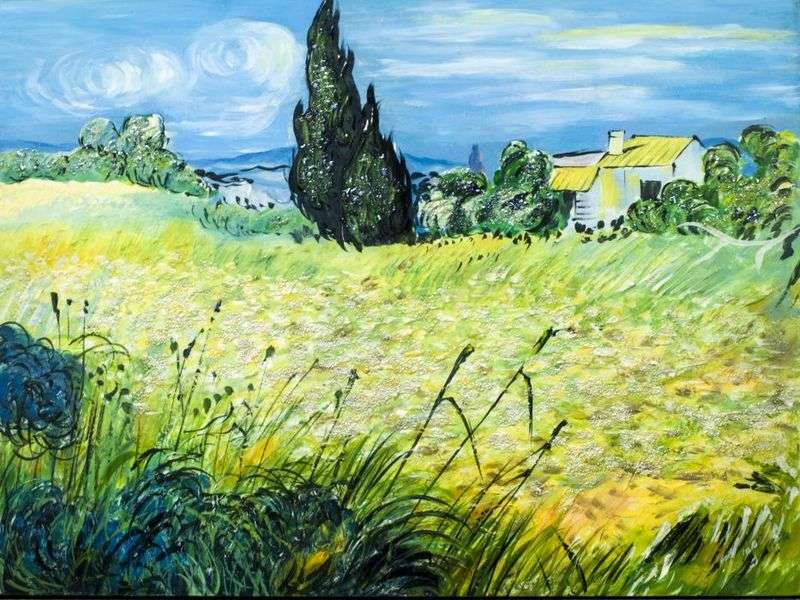 Green wheat field with cypress by Vincent Van Gogh
Green wheat field with cypress by Vincent Van Gogh Wheat Field by Vincent Van Gogh
Wheat Field by Vincent Van Gogh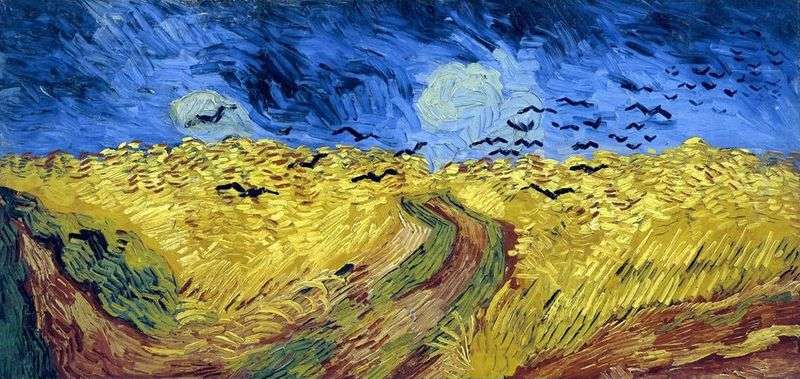 Crows in a wheat field (Wheat field with crows) by Vincent Van Gogh
Crows in a wheat field (Wheat field with crows) by Vincent Van Gogh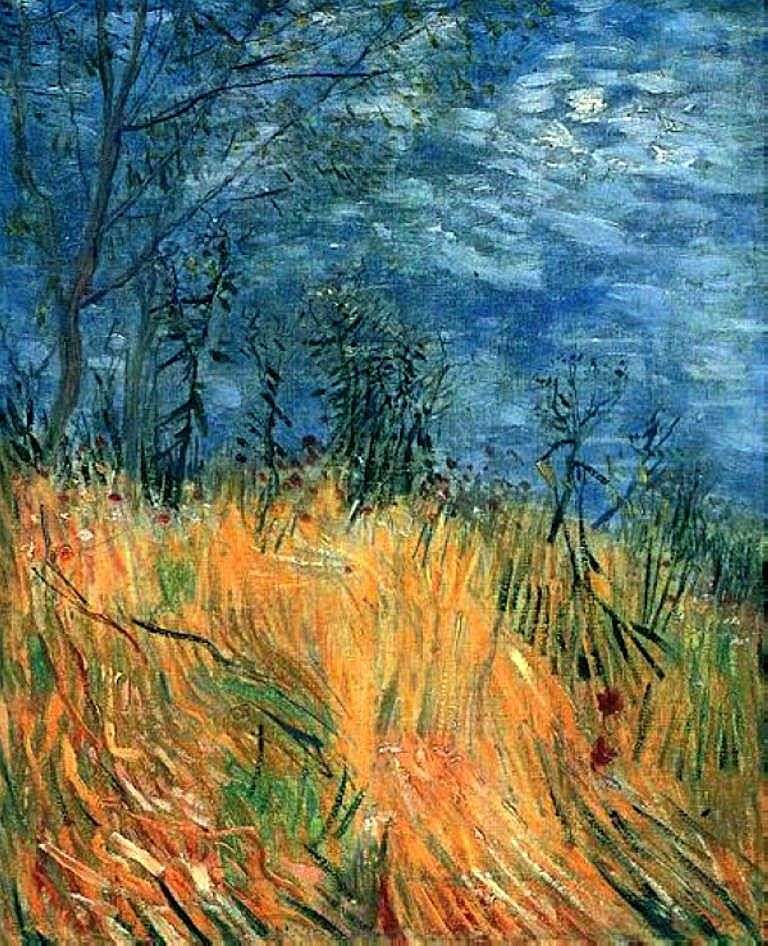 The edge of a wheat field with poppies by Vincent Van Gogh
The edge of a wheat field with poppies by Vincent Van Gogh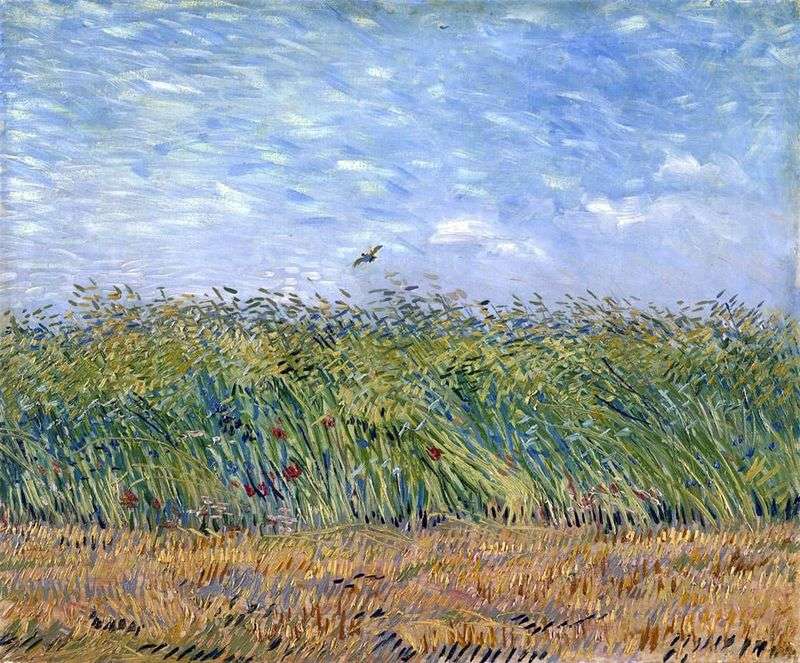 Wheat field with a lark by Vincent Van Gogh
Wheat field with a lark by Vincent Van Gogh Green wheat ears by Vincent Van Gogh
Green wheat ears by Vincent Van Gogh